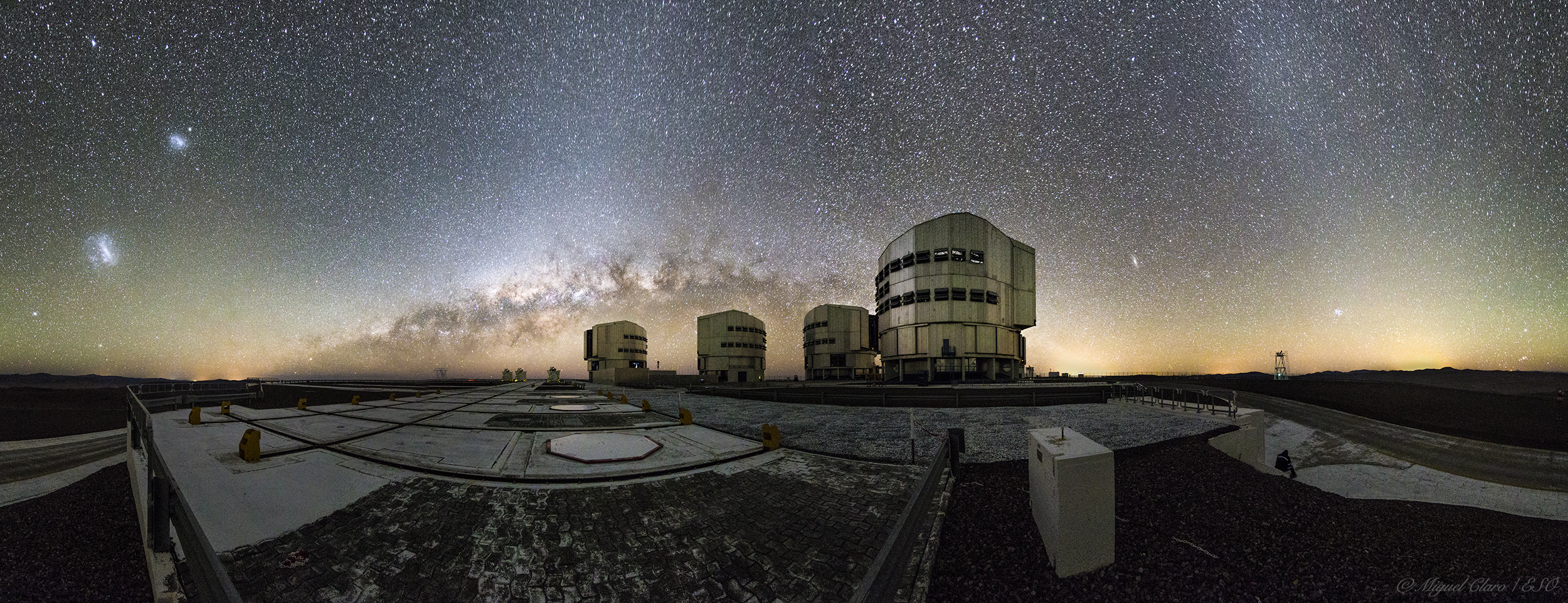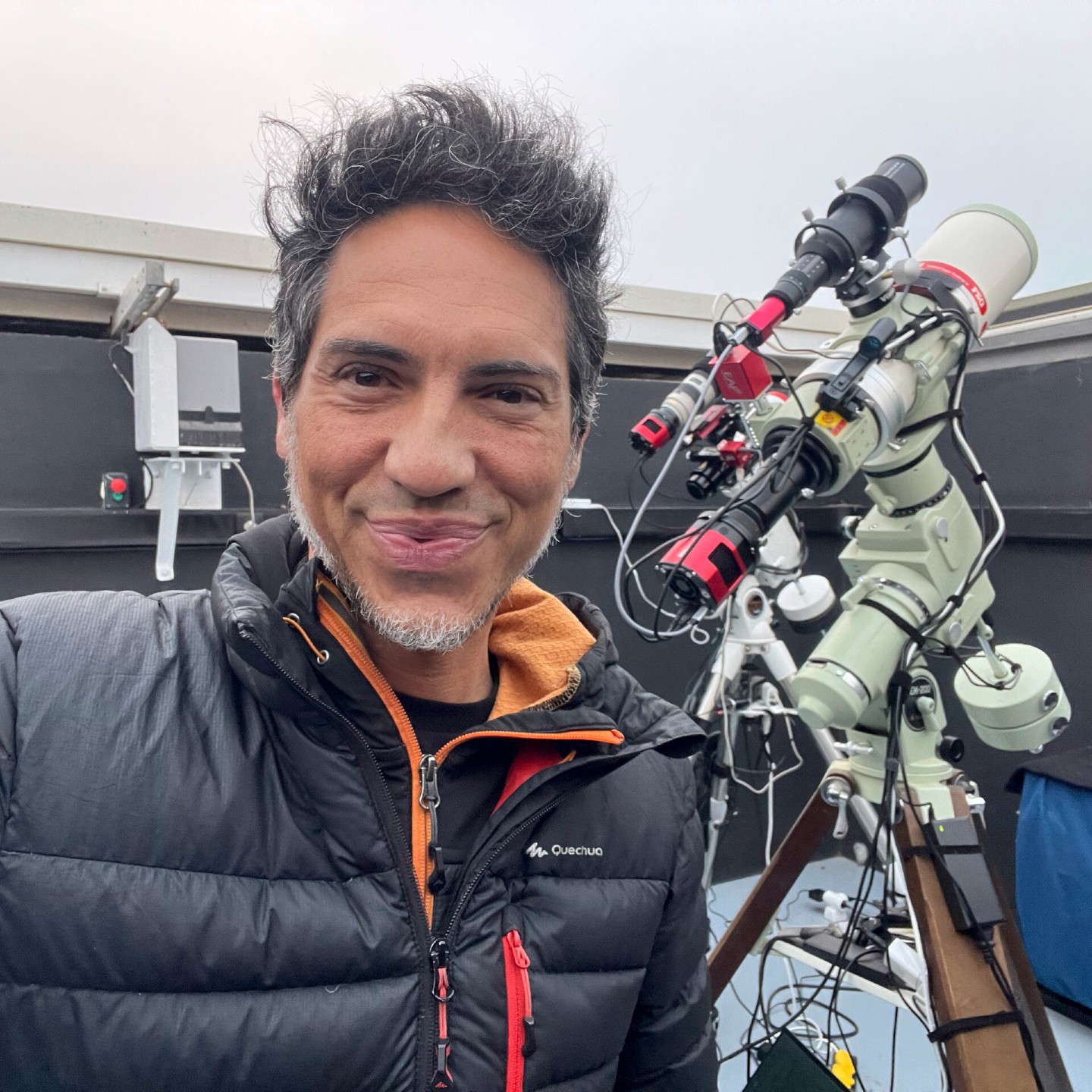Zodiacal Light Meets 'Gegenschein' Above ESO's Very Large Telescope in a Stunning Panorama
Miguel Claro is a professional photographer, author and science communicator based in Lisbon, Portugal, who creates spectacular images of the night sky. As a European Southern Observatory Photo Ambassador and member of The World At Night and the official astrophotographer of the Dark Sky Alqueva Reserve, he specializes in astronomical "Skyscapes" that connect both Earth and night sky. Join Miguel here as he takes us through his photograph, "Magellanic Clouds, Zodiacal Light and Gegenschein on a VLT Panorama."
Taken from Cerro Paranal, a mountain in Chile's Atacama Desert that is home to the European Southern Observatory's Very Large Telescope, an almost 360-degree panoramic view shows several interesting objects of the night sky.
From left to right, we start with the bright star Canopus and the Large and Small Magellanic Clouds, two of the Milky Way's neighboring galaxies. The Milky Way's galactic arm is setting behind the horizon while the zodiacal light — sunlight reflected off interstellar dust — lights up the sky behind the Antu telescope, one of the four units that comprise the VLT. [Amazing Space Views of ESO's Very Large Telescope]
Next to Yepun, the last telescope on the right, the elongated diffuse light is clearly visible coming from the Andromeda galaxy. Near the horizon on the right side of the image, the Pleiades star cluster is visible next to the tower silhouette.
In the upper right part of the image is another diffuse atmospheric glow known as the gegenschein, a faint brightening of the night sky in the region of the antisolar point, or opposite the sun. Like the zodiacal light, the gegenschein is created by sunlight scattering off particles in space. However, the gegenschein is fainter because the light particles are backscattered, bouncing off dust particles beyond Earth's orbit and back toward our planet. Light particles responsible for the zodiacal light take a more direct path from the sun to Earth.
Breaking space news, the latest updates on rocket launches, skywatching events and more!
"The soft glow is the collective light of dust particles orbiting the sun out to the orbit of Jupiter and perhaps beyond," said Les Cowley, a retired physicist and atmospheric optics expert, on his website Atmospheric Optics. "Some dust is hypothesized to originate from comets, other from remnants of very rare collisions between asteroids between the orbits of Mars and Jupiter," he added.
A faint orange light just above the horizon is another phenomenon known as airglow. Unlike the zodiacal light and the gegenschein, airglow is the result of chemical interactions inside Earth's atmosphere. Ultraviolet radiation from the sun energizes molecules like oxygen and nitrogen. As those energized molecules collide with each other, they release energy in the form of photons, or tiny particles of light that create this vivid glow.
Editor's note: If you captured an amazing astronomy photo and would like to share it with Space.com for a story or gallery, send images and comments to managing editor Tariq Malik at spacephotos@space.com.
To see more of Claro's amazing astrophotography, visit his website, www.miguelclaro.com. Follow us @Spacedotcom, Facebook and Google+. Original article on Space.com.
Miguel Claro is a professional photographer, author and science communicator based in Lisbon, Portugal, who creates spectacular images of the night sky. As a European Southern Observatory photo ambassador, a member of The World At Night and the official astrophotographer of the Dark Sky Alqueva Reserve, he specializes in astronomical skyscapes that connect Earth and the night sky.


